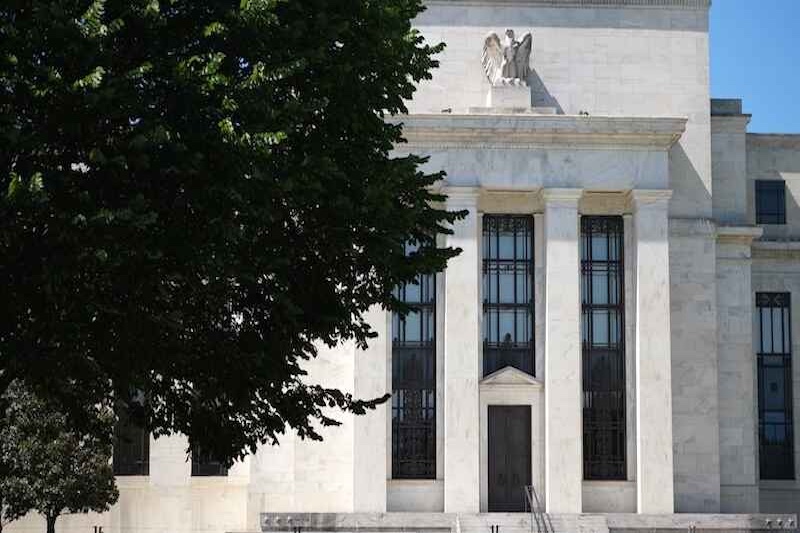Monday Takeaways: A Strong Jobs Report Rattles Markets
Shah Gilani|January 13, 2025

The jobs report just blew past expectations…
And the bond market is sending a clear warning signal.
With Treasury yields climbing and the 10-year approaching 5%, investors need to pay attention to where money is flowing…
Plus, bank earnings are on deck this week, and we’re watching for any signs of stress in commercial real estate.
Tune in for your Monday Takeaways. Don’t miss what’s moving your money… NOW.
Click on the thumbnail below to watch.
Transcript
Everybody, Shah Gilani here with your Monday Takeaways, and none of them are very exciting. Well, they’re all exciting, but none of them are really very good.
Takeaways from last week: First, we had a tremendous surprise Friday in the nonfarm payroll number. Two hundred fifty thousand jobs were created. The expectation was less than half that. It blew models out of the water and knocked the stock market down. Why?
Interest rates. There’s no reason for the Fed, which has been zeroing in – correctly or incorrectly – on their measures and metrics. For the last six months, they’ve been talking about the labor markets: watching them, analyzing tightening and loosening, looking for softness. The problem is the labor markets are quite strong.
They saw some hurricane effects, and temporarily there were job losses because people were out of work, trying to find their belongings and fix their homes. We’re going to see that again with the LA fires. So unemployment looked like it was ticking higher, and the labor market appeared to be softening. Not anymore.
Last week’s numbers were remarkable. Strong economic growth, strong wage growth, still nearing an average of about 4%. That’s significant wage growth for a large, gigantic economy like ours. So bond markets are selling off. They’ve been selling off.
Let me give you a heads up about how difficult things are in the bond market for traders. As a former bond trader among everything else I traded, it’s been a tough market for institutional traders who put down billions of dollars trading treasuries. They have the liquidity, they trade the yield curve, they trade all kinds of instruments – twos, tens, yield spreads, euro dollar instruments against treasuries, and more.
They’re having a hard time because rates have gone up. The Federal Reserve started its rate-cutting regime on September 18 with a 50-basis point cut. Two days before, on September 16, the 10-year Treasury yield was 3.63%.
They cut a total of 100 basis points off the Federal Reserve’s Fed funds overnight lending rate that they target. But the market didn’t care. It sold off.
The 10-year Treasury yield – the real-world benchmark that people actually borrow against and investors use to determine premium investments – is now 4.77%. That’s 114 basis points higher than where it was two days before the Fed cut.
That’s what the market’s worried about. Valuations are now affecting the tech names again. The present value calculations, all this discounted cash flow analysis – all the factors that hit the big tech names, the mega-cap tech names, the growth names – are based on valuation models that people use to assess where shares should trade relative to earnings, because they don’t pay dividends.
It’s about growth. These models measure growth and the value of that growth that you want to pay for in the present. That’s being affected by higher rates.
We saw it before in 2022 when the Fed started raising rates. We’re seeing it again now. The big mega-cap names are getting hit. Nvidia is down this morning. The market’s been open less than 15 minutes, and the Nasdaq is down 1.63% at about 9:45.
Futures were down, and the market is following through. The VIX volatility index has a 21 handle on it, moving considerably higher.
The problem again is rates and yields. The bond market is now an alternative to equities. Remember TINA (There Is No Alternative)? She was queen when yields were near zero and borrowers could access ridiculously low rates. There was no yield, so there was no investment alternative.
TINA is dead. Now people have fixed income. The retirement model would have been different had interest rates remained somewhat normalized. Older investors were starting to move money out of equities into fixed income, but there was no yield, so they stayed in equities. They poured more money into equities. Now we’re seeing the alternative has emerged: bonds.
If the 10-year Treasury gets to 5% – and it will – and above, TINA will be buried. Investors are going to move into the safety of Treasuries because as yields rise, equities are going to get more volatile.
That’s going to push more people toward fixed income. That’s your takeaway from last week: tremendous numbers, inflation not dead, strong economy, strong labor market. It’s all good for the economy. This is not good for rates getting cut.
That’s the problem from last week, and we’re seeing it again today. Yields aren’t going back down. There’s no reason for them to decrease barring a stock market crash.
Looking at the S&P, this is ugliness personified. We’re below support. There was support over here. It was a beautiful run. I know people say not to worry, that markets tend to be volatile. I know that. But what creates the volatility is concerning now because it’s rising yields.
That’s different than earnings. I’ll get to earnings in a second. The first line in the sand is 5,829. That was my first support at 5,830. We’re through that now.
The S&P is now at 5,782. We broke 5,830 on Friday when the close was 5,827, just below my first support level. Next support is 5,700. We’re at 5,787 – it won’t take much to test 5,700.
After that, 5,400. That’s a big drop. Be careful. Then 5,150. Don’t think we can’t get there. Don’t think we can’t break through the 200-day moving average and get way down there.
Why? Because there’s significant concentration in the market. The big mega-cap names, besides being popular on their own – with Nvidia being the most widely held stock in the world – are in all the big indices. As they decline, especially regarding ETFs tracking those big indices, the associated participants must sell the underlying stocks in the ETF baskets. When people redeem ETFs – sell, sell – and there are no buyers, they must redeem them.
It’s a creation process to create them when people invest. We have to buy all the underlying stocks so everyone has a pro-rata share of all those stocks in that ETF.
This applies not just to index ETFs, but to all several hundred ETFs containing those big names. When people start to sell those and there are no buyers, the sponsors’ traders must sell the underlying shares because you don’t need those units anymore for the ETF shares. They’re selling those big names because you don’t need that number of ETF units. With these big names concentrated in ETFs and indices, as they’re sold down, everything else starts to get sold.
The sponsors’ traders who create and redeem the underlying stocks to create and then destroy the ETFs are traders with P&L targets. If they see massive sell orders coming, knowing they’ll have to redeem ETF shares and sell the underlying shares of all those stocks, they won’t wait for those orders. To make money for their trading desk and their bonuses, they’re going to short those names, knowing the orders are coming to sell them.
When they sell them, they’re pushing the price down more, but that’s fine for them because they’ve already shorted them. They’re profiting from the decline. This is how trading works at that level. We haven’t quite reached a real negative feedback loop yet, but it’s possible. As I discussed in my Total Wealth piece on Friday, which you should read because it’s free just like this, concentration in the big names in the indices and ETFs that hold them all is a concern.
Be careful out there. That’s really your takeaway from last week and this morning’s action.
Quick updates for this week:
– Today: KB Home earnings
– Tomorrow: Bureau of Labor Statistics PPI for December
– Estimate: 3.5% rise year-over-year (November was 3%)
– Core estimate: 3.8% (November was 3.4%)
– Small Business Optimism Index: Expected 101.4, highest since summer 2021
– Wednesday: Bank earnings (Citigroup, JPMorgan, Goldman Sachs, Wells Fargo)
– Bank earnings should be good
– Watch trading desk performance and guidance
– Monitor loan loss reserve allocations
– BLS CPI Wednesday
– December estimate: 2.9% year-over-year
– Core estimate: 3.3% (same as November)
– Note: CPI headline has ranged from 2.4% to 2.9% for five months
– Federal Reserve Beige Book Wednesday
– Thursday: More bank earnings (Bank of America, U.S. Bancorp, M&T Bank, PNC)
– Watch real estate holdings and potential write-downs
– Monitor loan books and portfolio markdowns
– Census Bureau retail sales Thursday
– Friday: More bank earnings (Citizens Bank, Regions, Truist Financial)
Focus is on banks now, then tech later. Starting Wednesday, bank earnings take center stage. We’ll see if the narrative changes.
Be careful – we’re through early support levels on the S&P.
Catch you next week.

Shah Gilani
Shah Gilani is the Chief Investment Strategist of Manward Press. Shah is a sought-after market commentator… a former hedge fund manager… and a veteran of the Chicago Board of Options Exchange. He ran the futures and options division at the largest retail bank in Britain… and called the implosion of U.S. financial markets (AND the mega bull run that followed). Now at the helm of Manward, Shah is focused tightly on one goal: To do his part to make subscribers wealthier, happier and more free.



